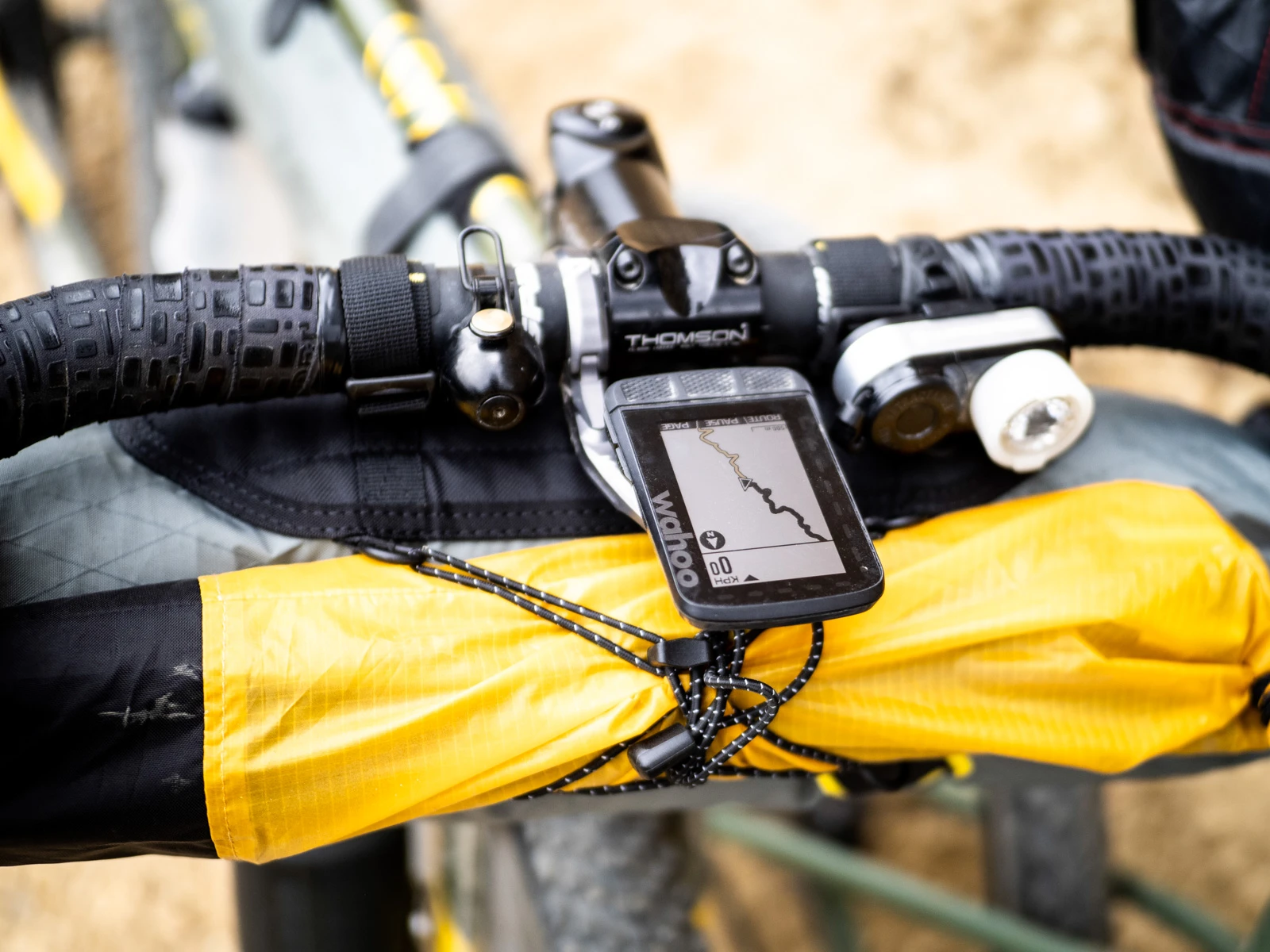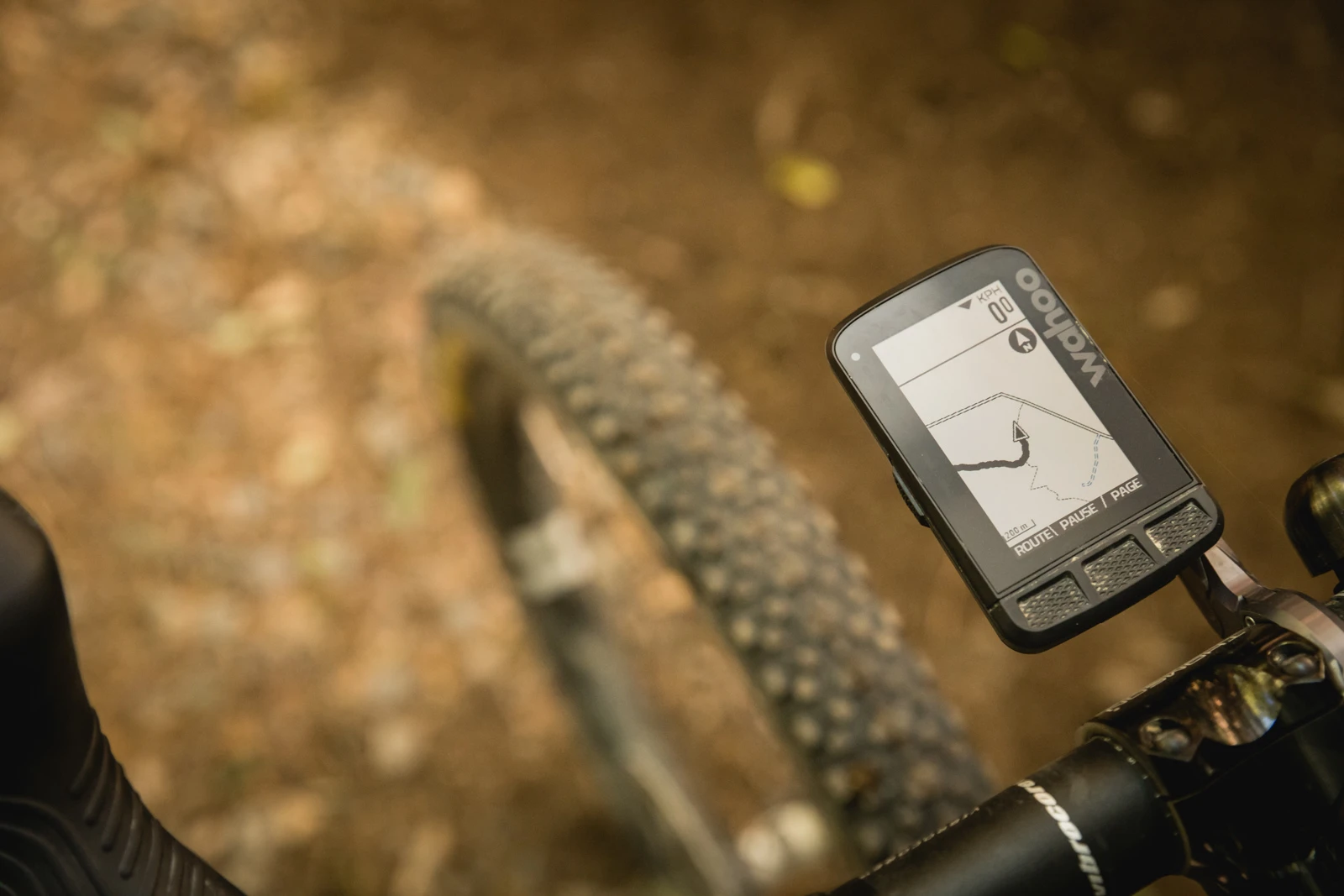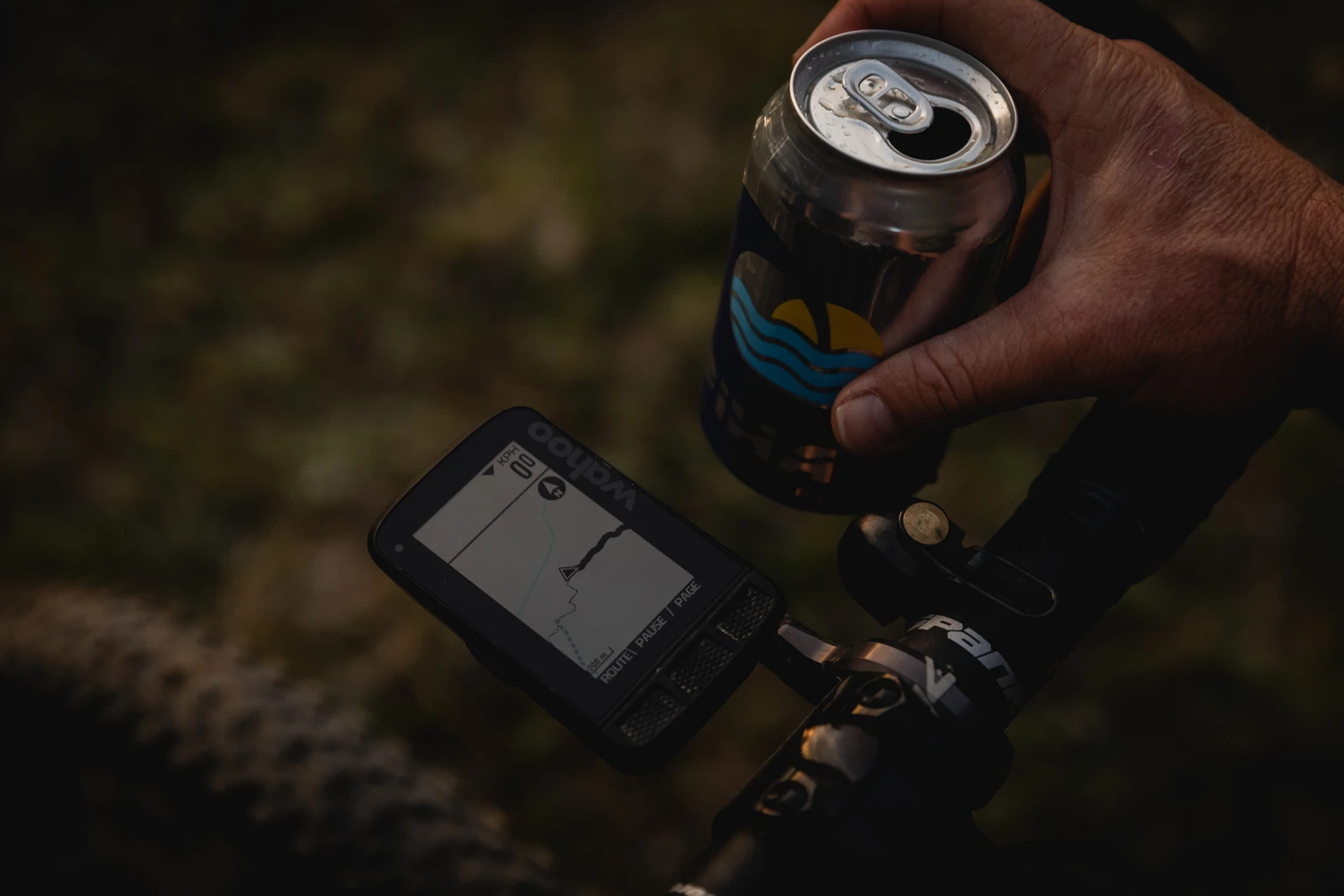Review: Robin Page
Images: Marcus Enno and Cam Mackenzie
Wahoo are best known for turbo trainers, in particular their KICKR smart trainer. But that’s not all they do: for the last few years, Wahoo have also been making a range of bike computers. The ELEMNT ROAM is the latest such addition, bringing navigation features to the line-up. Of course, there are several such GPS options on the market today, so how does the ROAM compare?
Let’s talk hardware. The ROAM is a chunky but sturdy little device with a 2.7 inch colour display and not a touchscreen in sight. Most of the display operates in black and white for higher contrast, but splashes of colour kick in where necessary for mapping and navigation. I like this, as the screen is very easy to read at a glance. Having lots of colours is nice but just distracts you while riding. The choice to stick with buttons was also a good one in my opinion, as I’ve had mixed experiences using cycle computer touch screens while wearing gloves.
The display also features a strip of LED’s on its left and upper borders, that can also be programmed to provide extra information as needed. I’ve set them to show how fast I’m going relative to my average speed, but you can equally set them to give you heart rate or power data as you see fit.
The mounting hardware looks very similar to that of a Garmin, but the orientation of the threads is slightly different so the two are unfortunately not cross compatible. The out-front mount provided with the ROAM is a doozy, fitting nice and flush to the computer; #aero indeed. The second included mount is a classic bar mount and uses cable ties rather than elastics to fit onto your bars. I prefer elastics so I can easily swap mounts between bikes, but cable ties are more secure. Besides, not everyone does as much swapping as me (oh, the tribulations of reviewing bikes for a job…)



Wahoo have chosen to outsource a lot of the functionality of the ROAM to its companion app, which fortunately is well designed. Playing around with data screens, uploading routes and extra functionality, like enabling push notifications and Strava Live Segments, are all controlled from here. It’ll link up to a KICKR smart trainer too.
The headline feature of the ROAM is the mapping functionality. There are several ways to utilise it, ranging from thesimple ‘retrace my steps’ mode, to more complicated route-finding options. Of particular interest is the ability to reroute a course if you take a wrong turn, to get you back on track. There are maps for all roads in New Zealand preloaded onto the computer, so you don’t have to worry about having mobile data to make it work.
In use, it’s a handy little GPS that’s very easy to read and operate. The buttons were glove friendly, the backlight on the screen was more than bright enough, and the data displays themselves were well arranged and easy to read. The GPS is surprisingly sensitive, linking up very quickly when turned on and picking up on tiny movements even under forest cover. This is one of the few GPS units I’d be happy leaving the auto start/stop function activated on, without having it drive me insane on steep climbs. However, despite this, it did somehow under-read slightly on MTB rides compared to my usual GPS; more testing will be required to figure out what the cause is. I like it a lot as a design, but there is an elephant in the room here: the price.
In New Zealand, the ELEMNT ROAM sells for $669. This is heading towards the pricier end of the market. While the ROAM does what it does well, it doesn’t have the full feature set that similarly priced units do to make it truly competitive. Three years ago, the easy-to-use design and mapping functions would make the ROAM a very competitive option at this price point, but we’re not in 2016 anymore. Devices on the market today are getting smarter and more powerful, with extra features such as built-in personal trainers, e-bike integration, and even crazy metrics such as ‘smoothness’ for quantifying your riding skills on the mountain bike. These are hitting the market at price points lower than the ROAM too, I might add.
It pains me to say this, because I really like the ROAM’s design, but the price pits it with devices such as the Garmin 830 that have significantly more functions available. Of course, the ROAM gets the advantage of working with Wahoo’s smart trainers, but this won’t be an advantage for everyone. If you’re looking for a device that does what it does well without a whole load of extra features bloating the device, the ROAM is a perfect pick. Just be aware that you’re paying for the privilege.

